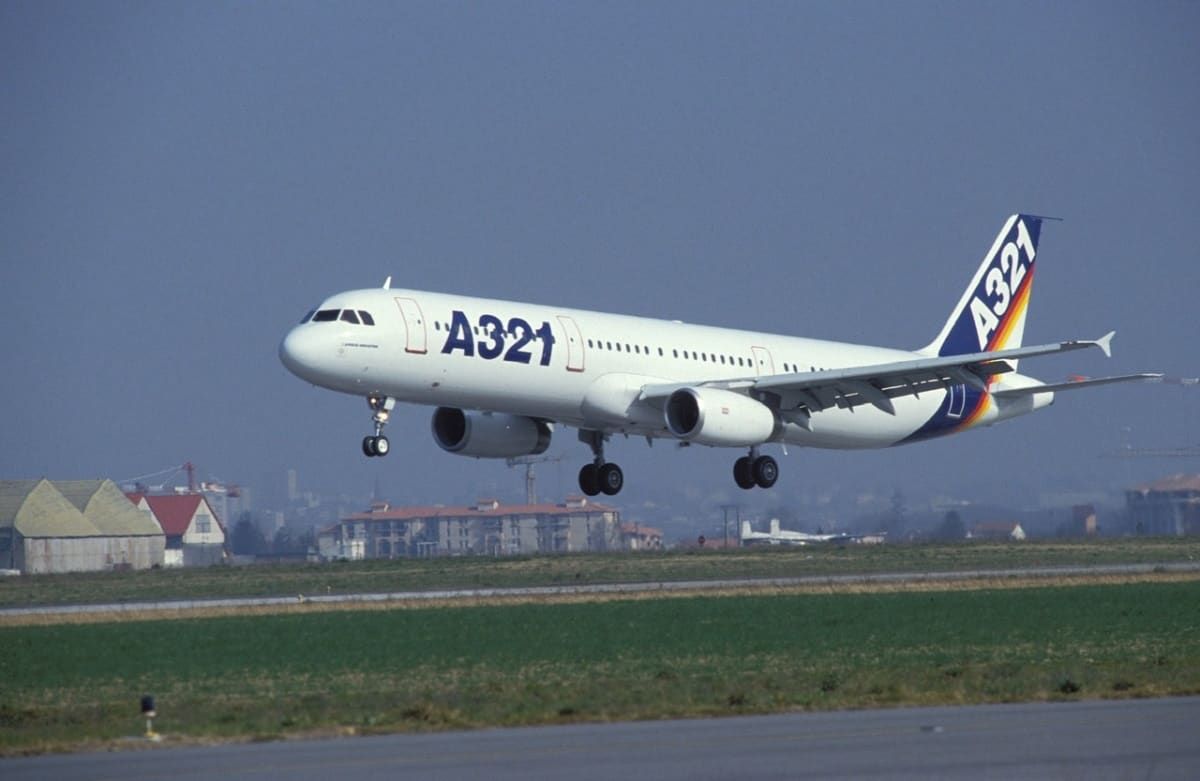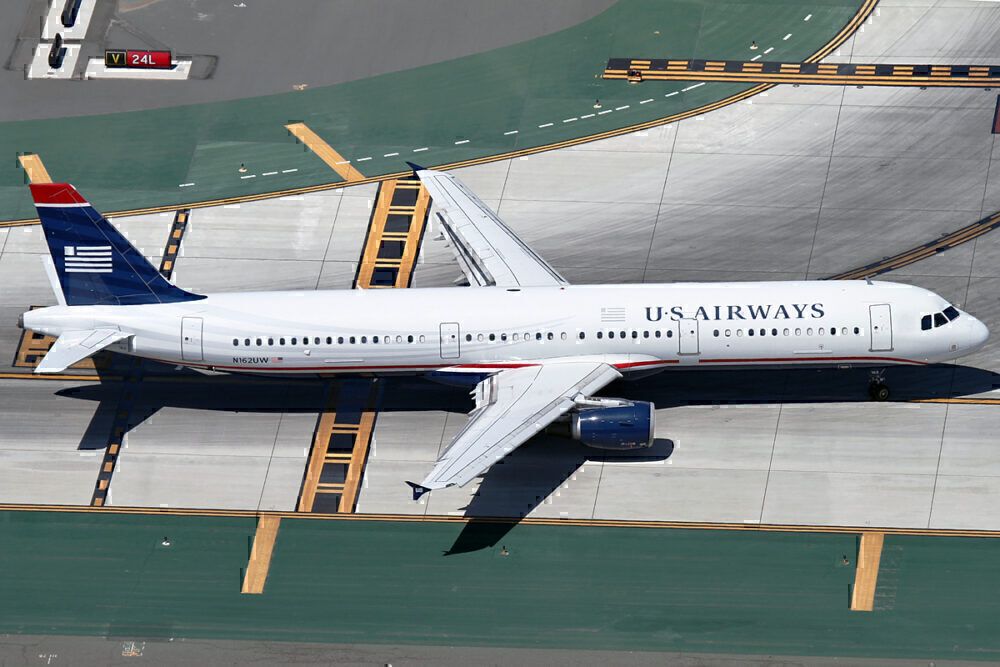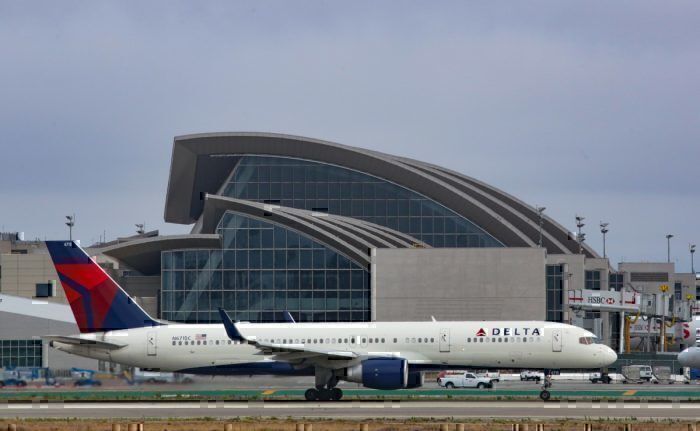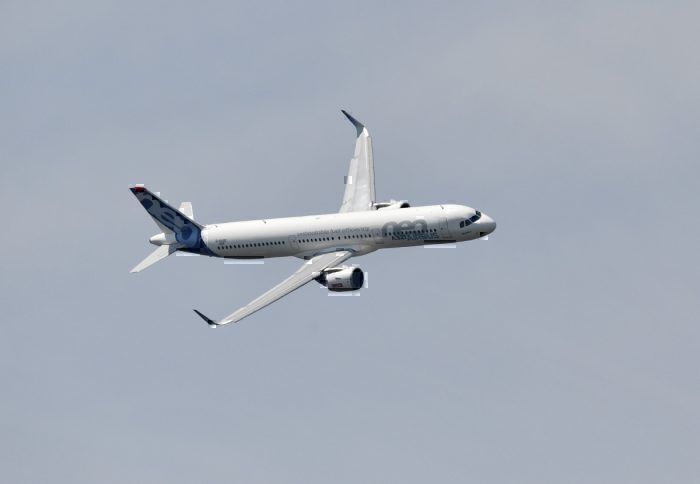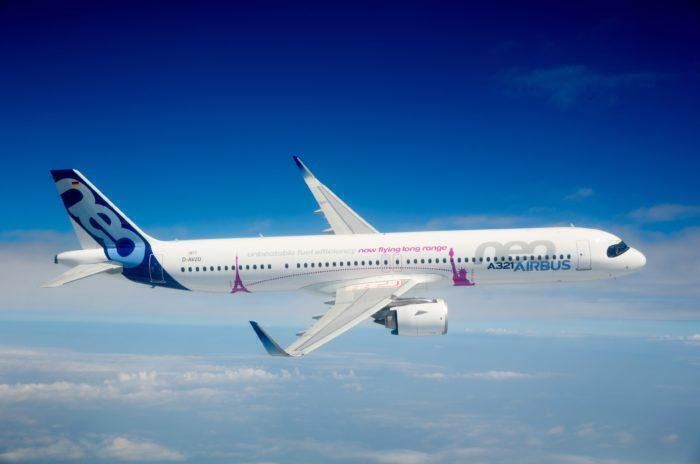The A321, along with newer options of the A321neo and the A321LR, are a vital part of the A320 family. It is a popular aircraft with many airlines operating both short and medium-range routes. This article takes a look at the specifics of the A321 and how it has been so successful with its higher capacity and increasing range.
The A320 and the A321
Airbus launched the A320 in the early 1980s, as part of a European program to develop a new single-aisle aircraft. Different size options were part of this from the outset, with a smaller A319 and larger A321. These would compete with other manufacturers' options and offer commonality across the family.
The A321 first flew in March 1993 and entered service with Lufthansa in January 1994. The A321 is almost seven meters longer than the A320, with the same wing size (although a slight increase in wing area due to the modification of the flaps and the wing trailing edge). This increased passenger capacity to a maximum of 220 (in single-class configuration), although 170 to 200 is more common.
The A320neo range was launched in 2010, designed to be 15% to 20% more efficient. The same variants were retained, with the A321neo becoming the high capacity option.
Competing with Boeing
The A320 was conceived to be a family of different sized aircraft. From its outset, it was designed to compete with the Boeing 737, and the A321 continued that focus. The A320 matched well against the 737 options at the time, but Boeing had an advantage with the 757.
The 757-200 offered a single class capacity of around 228, much higher than the 164 offered by the A320. The introduction of the A321 gave Airbus the ability to compete with this, and go further by providing cockpit commonality with the A320.
The A321neo offered similar competitive benefits. This time though, Boeing had increased the size options within the 737 family. Within the 737NG (Next Generation) family, the larger 737-900 offered capacity up to 220, matched by Airbus with 244 on the A321neo.
The range has also been an important part of this competition. The A321 added extra fuel capacity, but this did not increase its range over the A320. The Boeing 757-200 remained significantly ahead (7,250 kilometers for the 757 versus 5,900 kilometers for the A321). This was improved only slightly by the A321neo.
Paving the way for the A321LR and A321XLR
Another benefit of the A321 has been the ability to adapt the larger aircraft for an increased range. The A321LR is the first to be introduced, taking its maiden flight in 2018. This built even further on Airbus’ desire to compete with the Boeing 757. With the extension of operating range possible under new ETOPS rules, the 757 was increasingly being used for transatlantic routes. And the A321LR with its improved range of 7,400 kilometers could compete with this.
Stay informed: Sign up for our daily and weekly aviation news digests!
Speaking about the success and motivation for both the A321 and the A321LR, Cyril de Tenorio, product marketing manager for the single-aisle family at Airbus said in a report by Apex,
“The A321LR is an evolution of a very successful product, the A321. It’s a fantastic platform that historically has been appreciated for having the biggest single-aisle cabin available on the market, especially after the retirement of the Boeing 757. Historically, the A321 was fantastic on routes typically linking two big hubs. With the introduction of the new-generation engines, the fuel efficiency really opened a lot of opportunities to do new things with this aircraft.”
This gap in the market for medium density long-haul routes has worked well for Airbus. And they are taking it further with the A321XLR, expected to start delivery from 2023. It increases range to 8,700 kilometers, using larger fuel tanks. This has proved very successful, with a surprisingly high number of orders already. So much so, that it may well be an aviation gamechanger.
Selling well
Overall, the best way to gauge the success and need for the larger A321 is to look at the orders and sales figures. The original A321 has had 1791 orders and the A321neo 3413 orders (according to Airbus data as of May 2020). This compares well to the best-selling A320, with 4770 orders and 3948 for the A320neo (as of May 2020), and shows its increasing popularity.
It has also now overtaken the Boeing 737 as the most ordered aircraft. This is especially impressive given the much longer history of the 737.
What do you think of the A321? Do you prefer it to other medium-range aircraft? Let us know in the comments.

